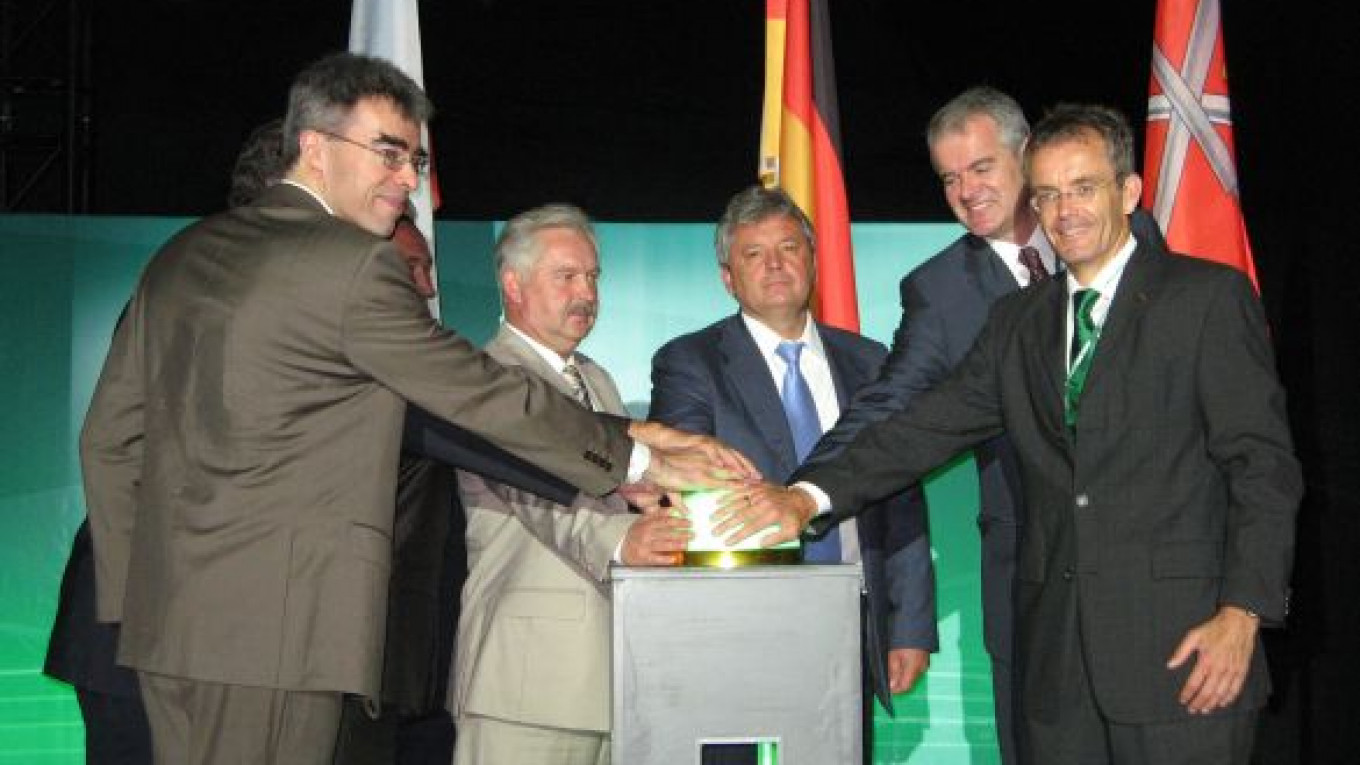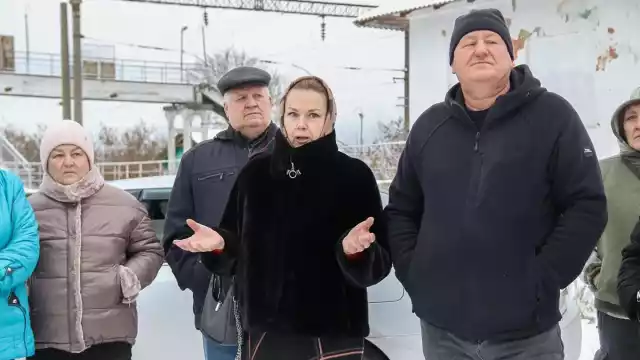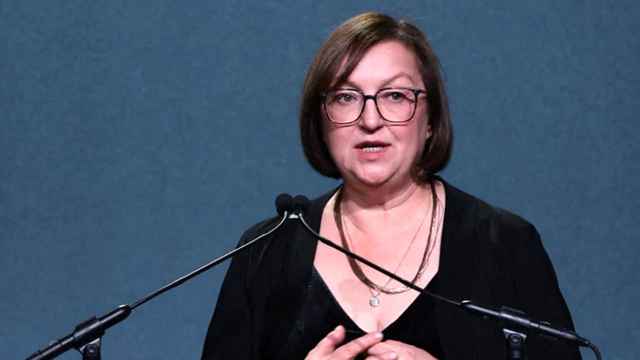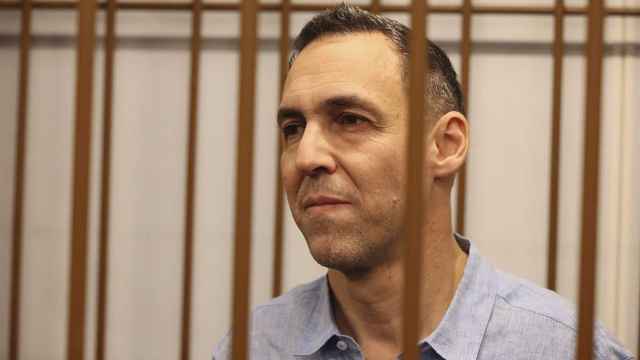NOVOGUROVSKY, TULA REGION — "Work, stay alert!" exclaims a red inscription on a gray-concrete wall at German cement producer HeidelbergCement's new $420 million plant, which opened Wednesday.
Construction workers building the plant made the inscription, but it could serve as a motto for the facility's 400 incoming employees, some of whom are already setting up equipment for the start of production next month.
The company's third local plant, it is reminiscent of a roller coaster with its myriad of conveyor belts moving raw materials throughout the pistachio-colored facilities. Building it required 100,000 cubic meters of concrete, 40,000 tons of steel and 700 kilometers of cable, Christian Knell, chief executive of HeidelbergCement in Russia, said at the opening ceremony.
The facility — located in the Tula region, 150 kilometers south of Moscow — will produce 2 million tons of cement a year and reach full capacity by 2013, Knell said.
But output could subsequently grow to 2.2 million tons, bringing the company's total annual production in Russia to 5 million tons, he said in an interview.
HeidelbergCement, which has invested about $800 million in Russia in the last 10 years, is counting on surging local demand for construction materials.
"Russia is an attractive market for HeidelbergCement. The local cement market demonstrates steady growth, which stood at 24 percent in the first quarter of 2011. We expect that the size of the cement market will increase to 56 million tons this year," Knell said.
It seemed to be a day for cement factory openings. In Kolomna near Moscow, President Dmitry Medvedev opened a cement plant in which Swiss Holcim Group invested a total of 500 million euros ($700 million).
Medvedev, accompanied by Swiss president Micheline Calmy-Rey, praised the new facility, which, he said, "meets all the modern requirements."
"Today we need a lot of cement. We need investment in infrastructure," Medvedev said, Interfax reported.
Cement output in Russia rose 14 percent last year to 50.4 million tons. It is expected to reach the pre-crisis 60 million tons next year and hit 70 million tons by 2015, said Ksenia Arutyunova, an analyst at Rye, Man & Gor Securities.
Driving cement demand in the next several years are big projects like construction for the Sochi Olympics and the Kazan Universiade, as well plans for more economy-class housing, Arutyunova said by phone.
But Knell said his facility wouldn't supply such distant projects because it intends to focus on the needs of the Moscow and Tula regions.
HeidelbergCement, whose other domestic plants are in Ufa and the Leningrad region, plans further expansion. Setting up a second line at the new plant is one possible option, Knell said. The company plans to expand its Leningrad plant's capacity this fall.
The company is also interested in local acquisitions.
"If we have a chance to buy something for a reasonable price, we will do so," Knell said.
HeidelbergCement was one of the companies approached earlier this year by Yelena Baturina's Inteko holding, which was seeking to sell its two cement production facilities in the Krasnodar region.
The company considered the opportunity but decided that "for the time being, it's not for us," Knell said without elaborating.
Baturina bought the Atakaitsement and Verkhnebakansky plants in the Krasnodar region in 2006 soon after selling five other cement-making facilities to Eurocement, which saw its market share increase dramatically.
Later on, the Federal Anti-Monopoly Service opened a case into Eurocement accusing it of violating the law on competition and hiking prices.
After conducting a check, the anti-monopoly service fined the company and ordered it not increase prices without informing the watchdog.
Now cement prices are again a major concern for market players.
The first half of 2011 saw cement prices skyrocket, which producers said resulted from a lack of transportation resources.
Cement prices on commodities exchanges jumped 26 percent to about $100 per ton, said Arutyunova of Rye, Man & Gor Securities.
State construction committee head Nikolai Koshman told RIA-Novosti in late June that prices for cement had increased to 6,000 rubles ($215) per ton since March and the figure could exceed 10,000 rubles per ton in August, which might result in increasing imports.
Supply problems arise every year, especially in the summer, due to the shortage of railway capacities, Knell said, adding that HeidelbergCement does not rely on railway logistics and uses trucks to supply its customers directly.
Prices are likely to decrease a bit in the second half of the year, with growth over the second half of 2010 not exceeding 10 percent, Arutyunova said.
A Message from The Moscow Times:
Dear readers,
We are facing unprecedented challenges. Russia's Prosecutor General's Office has designated The Moscow Times as an "undesirable" organization, criminalizing our work and putting our staff at risk of prosecution. This follows our earlier unjust labeling as a "foreign agent."
These actions are direct attempts to silence independent journalism in Russia. The authorities claim our work "discredits the decisions of the Russian leadership." We see things differently: we strive to provide accurate, unbiased reporting on Russia.
We, the journalists of The Moscow Times, refuse to be silenced. But to continue our work, we need your help.
Your support, no matter how small, makes a world of difference. If you can, please support us monthly starting from just $2. It's quick to set up, and every contribution makes a significant impact.
By supporting The Moscow Times, you're defending open, independent journalism in the face of repression. Thank you for standing with us.
Remind me later.






